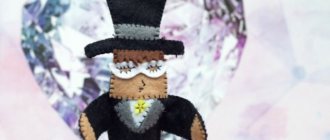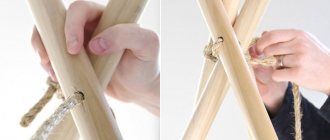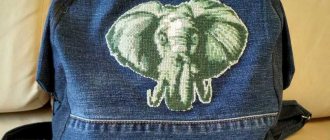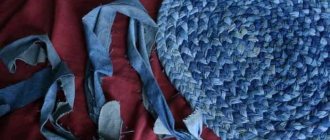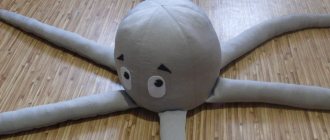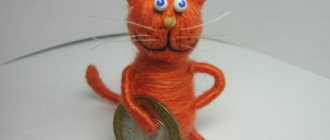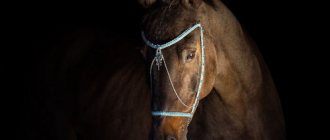There are many different patterns for textile dolls on the Internet. But it’s difficult to choose just one: you have to open all the pages in a row and compare each one. We will help make this task easier. In one article we have collected 50 master classes and patterns for fabric dolls. The options are very different. From simple - but still beautiful - patterns for beginners to serious original works. There is no need to open many windows in the browser, no need to remember which page is on which microscope. Just scroll down. There will definitely be a textile doll that suits you.
No. 1 Pattern of a cute donut doll made of fabric
In the master class we will look at how to sew the doll itself.
If desired, you can simply color it. Or dress it up in clothes, the details of the pants, jacket and bow are on the same pattern. Tools and materials
- Scissors.
- Iron or hair dryer.
- Fabric chalk or marker.
- Sewing needle.
- Threads.
- Synthetic brushes of medium hardness.
- Fabric paint (for eyes and hair).
- Watercolor pencil (for cheeks).
- Printed pattern.
- Flesh colored fabric. For the body of an average doll - 30-35 cm - you need a cut of 55x45 cm. You can take a narrower one, 110x17, this will also fit all the details.
- Filler (sintepon, holofiber).
- Two buttons (this is not for clothing, but for attaching hands. I’ll tell you more about the fastening technique below).
Step-by-step MK
1. Open.
Take a look, almost all the details to sew a doll are needed in four copies. Therefore, fold the prepared fabric in half and transfer the pattern details onto it. Leg, arm, head and hair - twice each. Torso - once. 2-3. Sew all the parts ( except the head!
) along the contour. Sew the head only along one side, not in a circle. In the photo, there is a marker on the side where you need to sew. It is better to make small stitches, so the doll will turn out neater. And don't forget to leave room for turning inside out. On the pattern these places are indicated by dotted lines.
4-5. Cut out the stitched pieces. Where you have already sewn it, it is better to cut out the contours with a clove. In other places (at the bottom of the body, for example) - simply along the marked line. 6-7-8. It's time to make the head of our fabric doll. Cut out both halves and iron the seams on them. Connect the halves and secure with pins. Sew the doll's head around the perimeter. Do not forget about the dotted line - this place must be left free. 9. Turn all sewn parts inside out and iron the seams.
10. Stuff the legs of the future textile doll with filler. This is where a sushi stick comes in handy. Tamp the filler with it to make sure that it fills the entire part without voids. 11. Sew the edges. Yes, along that same dotted line. 12. Sew the legs to one half of the body. A needle-forward stitch works well here. 13. Stuff your torso with stuffing. Make sure it spreads everywhere and is fairly tight. 14. Sew up the torso with a hidden stitch.
15. Stuff the doll's head tightly with the stuffing. 16. Slightly tuck and baste the edge of the part (essentially this is the neck). 17-18. Secure the head to the body (with pins) and sew with a hidden seam.
19. We take on the small “ears”. This is the doll's future hair. Fold and baste the edge (same as you just did with the neck). 20. Fill these two pieces with filler and attach them to the doll’s head. Secure with pins. 21. Sew with a blind stitch. When ready, remove the basting threads. 22. Fill the handles with filler and sew them up.
Attaching the arms
. This is where the buttons mentioned in the list of materials come in handy: here they are, indicated by arrows in the photo.
Button-thread fastening is done like this. The doll's arms are placed on the body, and the place where they should be is marked. The button is attached to the hand (for example, the right) with several stitches. After this, a needle is pierced through the body of the textile doll. This is indicated by a red dotted line in the photo. The needle should come out at the marked point so that the hands are positioned symmetrically and according to the preliminary diagram.
Now the second hand is sewn on (along with the second button).
23-24. The final stage is painting. Use a marker or chalk to mark the hairline on the front and back of your head. 25. Mark the doll's eyes. 26. Draw eyes on top of the mark. It is best to use special fabric paint. 27. Color your hair thoroughly. Here you need to make special efforts: after drying, the paint turns pale and unpainted areas are often found. This especially affects the seams. You definitely don’t need to skimp on paint on them.
When the paint has dried, it needs to be fixed. Check the instructions on your package. Usually ironed through the fabric. Or blow with a hot hairdryer for 5-7 minutes.
The final touch: give your textile doll a little blush. There are many ways. In this case, a red watercolor pencil is used.
Making elegant doll outfits
The design of the doll's costume is chosen according to taste or according to the capabilities of your sewing skills. A simple option is a separate skirt and blouse. We take measurements of the waist of the body and the height of the upper part of our craft from the waist to the neck. For example, we got the following dimensions - waist 21 cm, height 7.5 cm. We take into account an allowance for the waist of 0.5 cm, height - 2 cm. This means we need a cut for the blouse 21.5x9.3 cm. We cut out and stitch on both sides length We put it on the body and stitch it, making darts.
Note!
How to make wooden shelves with your own hands - original design options
Kinusaiga technique for beginners: what is it, a description of creating paintings from threads
How to weave a figurine from rubber bands: how to learn to weave animals, toys and what you can make from rubber bands on a slingshot
To sew a skirt, measure the distance from the waist to the desired length, depending on what part you want - long or short. We cut out a rectangle of material according to the width and length of the future skirt, leaving 2 cm for an allowance. We hem the edges and adapt them to the body. For pomp, you can make a petticoat from tulle.
No. 3 Doll with bent legs
Here you can see how important posture and surroundings are.
In essence, this is the same textile doll as above, only cut and sewn differently. Plus interesting details. And the result is a completely different product. It turns out that the body of a fabric doll is just a blank. The basis for playing with imagination and demonstrating sewing skills)) Add lace frills, knitted socks, bows, frills... And our standard tilde blank turns into a little princess
